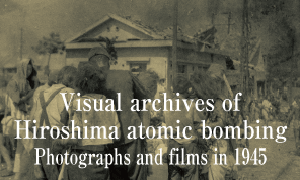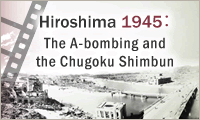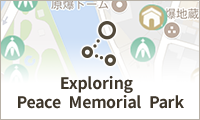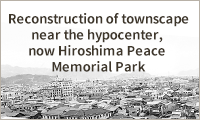Document on secret Japan-U.S. nuclear pact kept by ex-PM Sato’s family
Dec. 24, 2009
A document on a secret Japan-U.S. pact, signed by then Japanese Prime Minister Eisaku Sato and U.S. President Richard Nixon in 1969 allowing the United States to introduce nuclear weapons into Okinawa in the event of a contingency, has been kept by Sato's family, a family member disclosed Tuesday.
The discovery of the document, whose existence has been denied by Japan's Foreign Ministry, is likely to influence the ongoing probe by a panel set up by Foreign Minister Katsuya Okada into the existence of secret deals between the two countries.
According to Shinji Sato, Sato's son and a former transport minister, the document signed by Sato and Nixon records the minutes of a secret conversation between the two leaders during the summit meeting in November 1969.
At the time, the two countries were negotiating the return of Okinawa to Japan from the United States and the mandatory conditions for the reversion of Okinawa to Japanese sovereignty were the removal of all nuclear weapons and application of the Japan-U.S. security treaty. Okinawa was returned to Japan in 1972.
However, the minutes showed that Nixon requested that Japan, with prior consultation, allow the United States to bring nuclear weapons into Okinawa in the event of an emergency in Japan or other parts of Far East Asia, according to Sato.
The Japanese prime minister responded that Tokyo would fulfill the request without delay if it was proposed through prior consultation.
Both parties also agreed to classify this document and keep it only at the White House and the prime minister's office.
The document was found at Sato's house in Tokyo's Daizawa district in 1987, the year Sato's wife Hiroko passed away, when the family was sorting out the couple's belongings, and has been kept by the family since then.
''The reversion of Okinawa to Japanese sovereignty was my father's ardent wish. It is not clear for what purposes this document was made but evidently there was such a promise with the United States as the document bears my father's signature,'' Sato said.
The existence of the document had been revealed in a book by Kei Wakaizumi, a late scholar in international politics who dealt with secret negotiations between Japan and the United States, but had not been publicly confirmed.
A disclosed official U.S. document revealed that Sato and Nixon had entered a small room next to the president's office, apparently to hold secret discussions and sign the pact, but a text of the minutes of their agreement there had not been discovered.
Prime Minister Yukio Hatoyama told reporters Tuesday that he will ask the panel to investigate the document.
''I will leave the matter to the experts' panel launched by Foreign Minister Katsuya Okada to come up with a conclusion about the document,'' Hatoyama said.
''We need to confirm whether it is an official document,'' said Chief Cabinet Secretary Hirofumi Hirano in a separate press conference the same day.
It is believed there were four secret pacts signed by the two countries including the one kept by the Satos. The other three are one related to the introduction of nuclear arms into Japan, an accord on which was reached upon the 1960 revision of the bilateral security treaty, another to U.S. military operations in the event of a contingency on the Korean Peninsula, and the third to the cost burdens for the reversion of Okinawa.
Earlier this month, Bunroku Yoshino, the Foreign Ministry's former American Bureau chief, admitted for the first time in court that the two countries struck an accord in which Tokyo would shoulder $4 million in costs on the reversion of Okinawa to Japan.
The Foreign Ministry also reportedly decided to admit the existence of the one under which Tokyo allows the stopover of U.S. military vessels or aircraft carrying nuclear weapons as the ministry has found documents suggesting the existence of such an accord following its in-house probe.
These secret pacts contradict Japan's three principles of not possessing, producing or permitting the introduction of nuclear weapons into Japan, which were first declared in 1967 by then prime minister Sato.
Since 1954, U.S. nuclear bombs and missiles were reportedly introduced into Okinawa, Japan's southernmost island prefecture hosting the bulk of the U.S. military bases in Japan, with about 1,200 nuclear weapons deployed there at peak.
(Distributed by Kyodo News on Dec. 23, 2009)
The discovery of the document, whose existence has been denied by Japan's Foreign Ministry, is likely to influence the ongoing probe by a panel set up by Foreign Minister Katsuya Okada into the existence of secret deals between the two countries.
According to Shinji Sato, Sato's son and a former transport minister, the document signed by Sato and Nixon records the minutes of a secret conversation between the two leaders during the summit meeting in November 1969.
At the time, the two countries were negotiating the return of Okinawa to Japan from the United States and the mandatory conditions for the reversion of Okinawa to Japanese sovereignty were the removal of all nuclear weapons and application of the Japan-U.S. security treaty. Okinawa was returned to Japan in 1972.
However, the minutes showed that Nixon requested that Japan, with prior consultation, allow the United States to bring nuclear weapons into Okinawa in the event of an emergency in Japan or other parts of Far East Asia, according to Sato.
The Japanese prime minister responded that Tokyo would fulfill the request without delay if it was proposed through prior consultation.
Both parties also agreed to classify this document and keep it only at the White House and the prime minister's office.
The document was found at Sato's house in Tokyo's Daizawa district in 1987, the year Sato's wife Hiroko passed away, when the family was sorting out the couple's belongings, and has been kept by the family since then.
''The reversion of Okinawa to Japanese sovereignty was my father's ardent wish. It is not clear for what purposes this document was made but evidently there was such a promise with the United States as the document bears my father's signature,'' Sato said.
The existence of the document had been revealed in a book by Kei Wakaizumi, a late scholar in international politics who dealt with secret negotiations between Japan and the United States, but had not been publicly confirmed.
A disclosed official U.S. document revealed that Sato and Nixon had entered a small room next to the president's office, apparently to hold secret discussions and sign the pact, but a text of the minutes of their agreement there had not been discovered.
Prime Minister Yukio Hatoyama told reporters Tuesday that he will ask the panel to investigate the document.
''I will leave the matter to the experts' panel launched by Foreign Minister Katsuya Okada to come up with a conclusion about the document,'' Hatoyama said.
''We need to confirm whether it is an official document,'' said Chief Cabinet Secretary Hirofumi Hirano in a separate press conference the same day.
It is believed there were four secret pacts signed by the two countries including the one kept by the Satos. The other three are one related to the introduction of nuclear arms into Japan, an accord on which was reached upon the 1960 revision of the bilateral security treaty, another to U.S. military operations in the event of a contingency on the Korean Peninsula, and the third to the cost burdens for the reversion of Okinawa.
Earlier this month, Bunroku Yoshino, the Foreign Ministry's former American Bureau chief, admitted for the first time in court that the two countries struck an accord in which Tokyo would shoulder $4 million in costs on the reversion of Okinawa to Japan.
The Foreign Ministry also reportedly decided to admit the existence of the one under which Tokyo allows the stopover of U.S. military vessels or aircraft carrying nuclear weapons as the ministry has found documents suggesting the existence of such an accord following its in-house probe.
These secret pacts contradict Japan's three principles of not possessing, producing or permitting the introduction of nuclear weapons into Japan, which were first declared in 1967 by then prime minister Sato.
Since 1954, U.S. nuclear bombs and missiles were reportedly introduced into Okinawa, Japan's southernmost island prefecture hosting the bulk of the U.S. military bases in Japan, with about 1,200 nuclear weapons deployed there at peak.
(Distributed by Kyodo News on Dec. 23, 2009)






